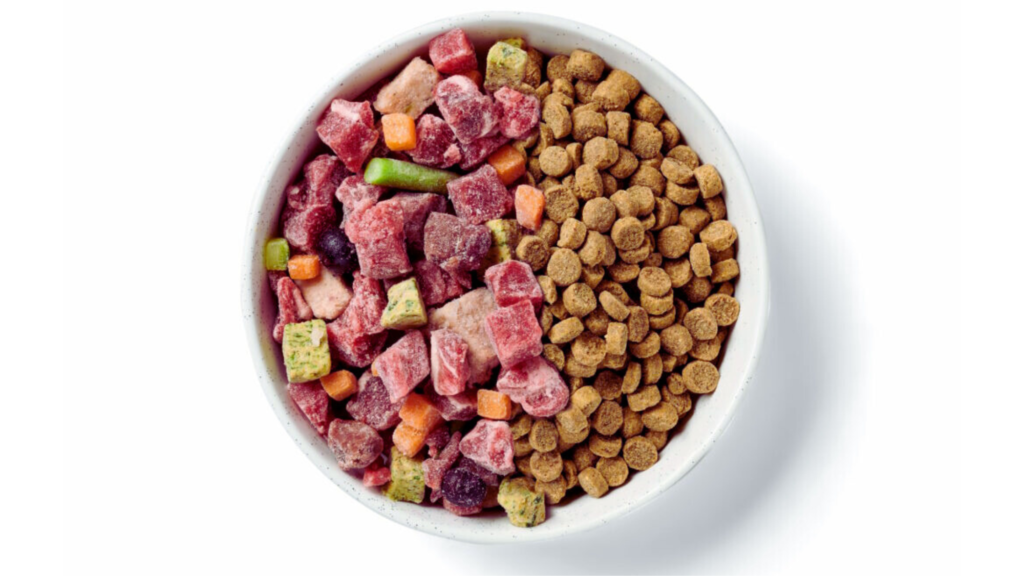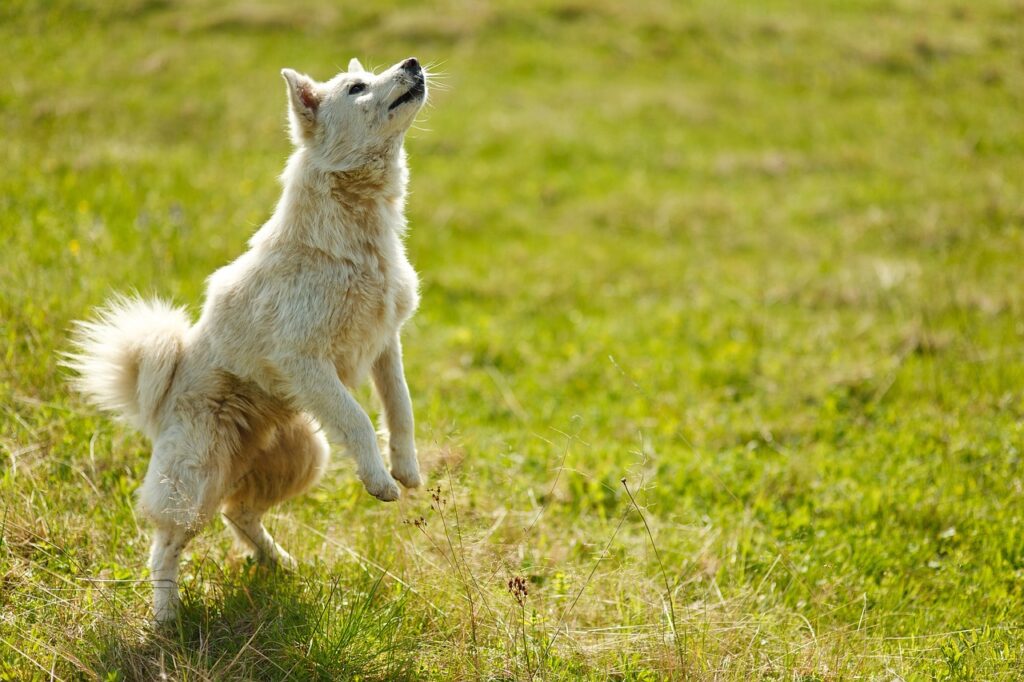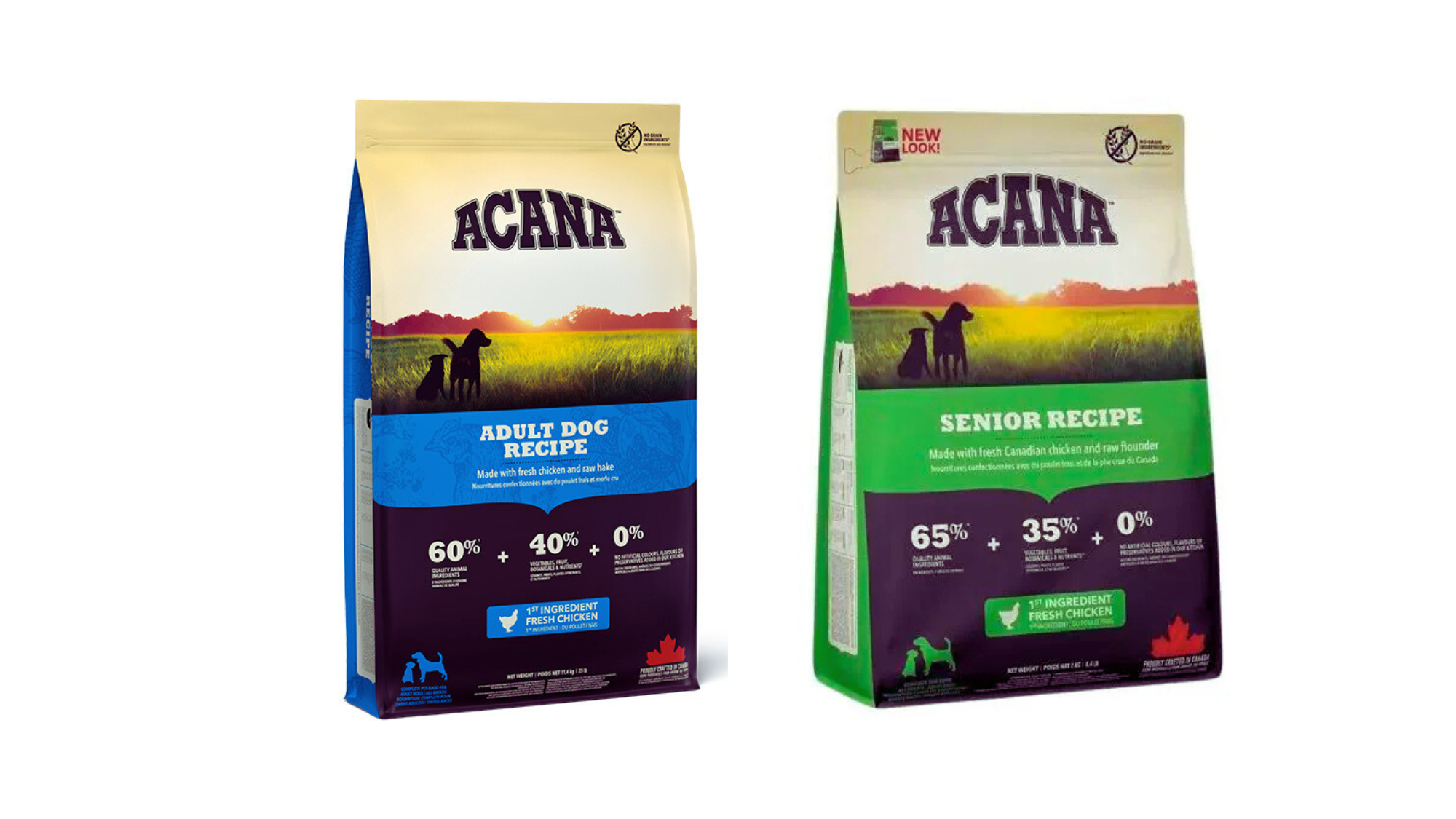| Summary: Adult dog food maintains energy and muscle health, while senior dog food supports aging joints, digestion, and cognitive function. Key differences include protein balance, calorie content, and added supplements like glucosamine. |
Difference between adult and senior dog food: Feeding your dog the right diet is a cornerstone of pet care—and as your canine companion ages, their nutritional needs evolve dramatically. Adult dog food is formulated to maintain a dog’s health, muscle mass, and energy levels during their prime years, whereas senior dog food is specially designed to address the challenges that come with aging.
To find out the what size collar for an Affenpinscher, ensure you measure your dog’s neck correctly for a perfect fit.
These challenges include decreased metabolism, joint issues, diminished dental health, and a gradual decline in digestive efficiency. In this comprehensive guide, we’ll explore the difference between adult and senior dog food in detail.
We will examine nutritional composition, digestibility, feeding frequency, caloric density, key nutrients, and more. Detailed comparisons, charts, and practical feeding guidelines will help you determine the optimal diet for your dog at each stage of their life.
Blog Highlights
ToggleQuick Comparison Chart: Adult Dog Food vs. Senior Dog Food
| Factor | Adult Dog Food | Senior Dog Food |
| Nutritional Composition | Moderate protein (18-25%) and fat (8-12%) to support active metabolism and muscle maintenance | Lower protein (15-22%) and fat (6-10%), with adjustments to ease digestion and reduce calories |
| Digestibility | Designed for a fully mature digestive system; includes whole grains and fibrous vegetables | Formulated for easier digestion; may include prebiotics, soluble fibers, and highly digestible proteins |
| Feeding Frequency | Typically 1-2 meals per day depending on lifestyle and activity levels | Often 1-2 meals per day, with portion control to prevent weight gain and digestive upset |
| Caloric Density | Approximately 300-400 kcal per cup to maintain weight and support moderate activity | Around 250-350 kcal per cup to account for reduced activity and slower metabolism |
| Key Nutrients | Emphasizes balanced vitamins, minerals, and joint supplements (glucosamine, chondroitin) | Fortified with antioxidants, omega fatty acids, and joint support ingredients; lower calorie count |
| Portion Sizes | Portion sizes vary with activity; generally larger portions for active adults | Smaller, more controlled portions to prevent obesity and to suit reduced metabolic needs |
| Health Focus | Maintenance of muscle, energy levels, and overall vitality | Supports joint health, cognitive function, and digestive efficiency; addresses age-related issues |
| Cost Considerations | Often available in bulk at competitive prices; cost varies with quality and ingredient sources | Typically slightly more expensive due to specialized ingredients and formulations |
1. Nutritional Composition: Balancing Energy and Maintenance

Adult dog food is designed to meet the nutritional needs of a dog in its prime—providing balanced levels of protein, fats, and carbohydrates to maintain muscle mass and support daily activities.
Proteins in adult diets generally range from 18% to 25%, which is sufficient for muscle repair and tissue maintenance. Fat levels are moderate, typically around 8% to 12%, supplying energy without contributing to excessive weight gain.
Senior dog food, by contrast, has a nutritional profile that accounts for the slowing metabolism and decreased activity typical of aging dogs. Protein levels in senior diets are often slightly reduced to around 15% to 22% to ease the burden on the kidneys, which may not process high levels of protein as efficiently in older animals.
Fat content is also lowered—usually between 6% and 10%—to reduce overall caloric intake. However, senior diets are enriched with antioxidants, omega-3 fatty acids, and other compounds that help counteract the effects of aging, such as inflammation and oxidative stress.
The adjustments in senior food composition are crucial because they aim to provide enough nutrients for maintenance while preventing issues related to overnutrition, such as obesity, heart disease, and joint problems.
2. Digestibility and Ingredient Quality: Easing the Burden on Aging Systems

One of the most significant changes that occurs as dogs age is a decrease in digestive efficiency. Adult dog food is formulated for a mature digestive system that is capable of processing a variety of whole grains, vegetables, and proteins. Ingredients are chosen for their nutrient density and overall balance, ensuring that active adult dogs receive a steady supply of energy and essential nutrients.
Senior dog food, however, takes digestibility a step further. The formulations are designed to be gentle on aging digestive systems. These diets often include highly digestible proteins and carbohydrates and may incorporate prebiotics and probiotics to support gut health.
Additionally, soluble fibers and other ingredients help improve nutrient absorption while reducing the risk of gastrointestinal upset. This careful attention to ingredient quality means that senior dogs can still absorb critical nutrients even if their digestion isn’t as robust as it once was.
3. Feeding Frequency and Portion Sizes: Tailoring to Metabolic Changes

Feeding frequency and portion sizes can vary significantly between adult and senior dogs. Active adult dogs typically thrive on 1-2 meals per day, with portions adjusted according to their level of activity, weight, and metabolic rate. Since adult dogs are generally more energetic, they may require larger portions to sustain their daily activity.
For a step-by-step guide on how to wear collar to an Affenpinscher, check out this detailed article to ensure a comfortable and secure fit for your dog.
For senior dogs, the scenario is different. As metabolism slows with age and physical activity decreases, calorie needs drop. This calls for smaller, more controlled portions to prevent obesity—a common issue in older pets.
While the feeding frequency might remain similar (1-2 meals per day), the portion sizes are often reduced to align with the lower energy requirements of senior dogs. In many cases, veterinarians suggest a careful calculation of daily caloric needs to avoid overfeeding, which can lead to additional health complications.
For example, an active adult dog might require about 300-400 kcal per cup of food, while senior dogs might only need around 250-350 kcal per cup to maintain a healthy weight.
4. Caloric Density and Energy Requirements: Preventing Overfeeding
Caloric density plays a pivotal role in ensuring that a dog’s dietary intake matches its energy expenditure. Adult dogs in their prime have a higher energy demand to support their daily activities.
Therefore, adult dog foods are often formulated with a caloric density of approximately 300-400 kcal per cup. This level of calories helps maintain their energy levels and supports muscle function without contributing to unnecessary weight gain—provided the portions are adjusted according to their activity level.
Check out the best dog collars for Border Collie to find durable, stylish, and comfortable options for your active dog.
Senior dogs, on the other hand, tend to have lower energy needs due to decreased activity and a slower metabolism. Consequently, senior diets are typically less calorie-dense, around 250-350 kcal per cup.
This reduction in caloric density is intentional; it helps prevent the gradual accumulation of excess body fat that can lead to obesity and its associated complications, such as diabetes, joint problems, and heart disease. By providing fewer calories per serving, senior dog food enables older dogs to enjoy balanced nutrition without the risk of overfeeding.
5. Key Nutrients and Supplementation: Enhancing Joint, Brain, and Immune Health
As dogs age, the importance of specific nutrients increases dramatically. Adult dog food is designed to provide balanced nutrition for a dog’s daily needs, with moderate levels of vitamins, minerals, and joint support supplements. Many adult diets include ingredients like glucosamine and chondroitin to help maintain joint health, especially in active or larger breeds.
Senior dog food, however, places a greater emphasis on joint health, cognitive function, and immune support. These formulas often incorporate higher levels of omega-3 fatty acids—such as EPA and DHA—which are known to reduce inflammation and support brain health.
Antioxidants such as Vitamins E and C, along with selenium and zinc, are added in higher concentrations to combat the increased oxidative stress that comes with aging. This nutritional strategy helps to protect cells, reduce inflammation, and support overall health in senior dogs.
In addition to joint and brain health, senior diets may also contain added fiber to support digestive health and facilitate smoother bowel movements. This is particularly important as older dogs may experience changes in their gastrointestinal systems, making highly digestible and fiber-enriched diets essential for their well-being.
6. Joint Health and Mobility: Addressing Age-Related Decline

Joint health is a major consideration when designing food for older dogs. While adult dog food often includes basic joint support elements, senior dog food usually features enhanced formulas specifically tailored to combat the wear and tear of aging joints.
Ingredients such as glucosamine, chondroitin, and MSM (methylsulfonylmethane) are commonly added to senior diets to help maintain cartilage, reduce inflammation, and support overall joint function.
These supplements are particularly critical for senior dogs who may be suffering from arthritis or other degenerative joint conditions. By incorporating these ingredients, senior dog food can help reduce discomfort during movement, improve mobility, and contribute to a better quality of life for aging pets. This targeted approach is one of the primary differences between adult and senior formulas and is key to addressing the specific challenges that come with aging.
7. Cognitive Function and Aging: Supporting the Aging Brain
Cognitive decline is a natural part of aging for many dogs, similar to what is observed in humans. Adult dog food provides sufficient nutrients to support general brain function, but as dogs transition into their senior years, the risk of cognitive dysfunction increases. Senior dog food often includes higher concentrations of omega-3 fatty acids, antioxidants, and B-vitamins—all of which have been shown to support brain health and slow cognitive decline.
For example, DHA is particularly beneficial for maintaining brain cell structure and function. Senior diets fortified with DHA and EPA can help preserve cognitive functions such as memory, learning, and overall mental alertness.
Some senior dog foods also include ingredients like L-carnitine and specific antioxidants designed to reduce the formation of free radicals, which can impair brain function over time. By focusing on these key nutrients, senior dog food offers a nutritional advantage that can help mitigate the effects of aging on the brain.
8. Immune System and Antioxidants: Fortifying Defenses in Later Life
Aging is often accompanied by a gradual decline in immune function, making senior dogs more susceptible to infections and illnesses. Adult dog food supports a well-functioning immune system with a balanced array of vitamins and minerals. However, senior dog food takes immune support a step further by increasing the levels of antioxidants such as Vitamins E and C, which help neutralize harmful free radicals.
The ideal size collar for English Springer Spaniel typically ranges from 14 to 20 inches, depending on the dog’s age and neck size, ensuring a comfortable and secure fit.
Additionally, senior diets may include extra selenium and zinc, trace minerals that are essential for maintaining robust immune responses. By boosting these immune-supporting nutrients, senior dog food can help older dogs better fend off infections and recover from illnesses. This proactive nutritional strategy is particularly important in senior pets, whose immune systems require additional support to cope with the challenges of aging.
9. Palatability and Digestive Health: Ensuring Enjoyment and Comfort
Taste and texture become increasingly important as dogs age. While adult dogs may be satisfied with a variety of kibble textures, senior dogs often benefit from softer foods that are easier to chew, especially if they have dental issues or missing teeth.
Senior dog food may be formulated to have a slightly different texture—softer kibble or even a mix of kibble and canned food—to enhance palatability and ensure that older dogs continue to enjoy their meals.
Moreover, as the digestive system ages, seniors might struggle with digesting certain ingredients that were well tolerated in their youth. Senior dog food typically includes highly digestible proteins and carbohydrates along with added prebiotics and probiotics.
These ingredients support gut health by promoting a balanced intestinal microbiome, which is essential for the efficient absorption of nutrients and overall digestive comfort.
10. Cost and Convenience: Investing in Health at Every Stage
While cost is always a consideration for pet owners, it is important to recognize that the specialized formulations in senior dog food may come at a slightly higher price compared to standard adult formulas.
The inclusion of targeted supplements—such as joint support compounds, omega fatty acids, and additional antioxidants—can increase production costs. However, investing in a high-quality senior formula is a proactive step toward maintaining your dog’s health and mobility as they age.
Find out what style dog collar is best for hounds to ensure comfort and safety for your furry friend.
Adult dog food is often available in larger bulk packages and at a lower cost per pound, which can be attractive for owners of younger, more active dogs.
Nevertheless, when it comes to senior nutrition, the long-term benefits of a specialized diet—such as improved joint function, better cognitive health, and enhanced immune support—often outweigh the incremental cost difference. For many pet owners, ensuring a better quality of life for their senior dog is well worth the extra investment.
11. Transitioning From Adult to Senior Dog Food: Best Practices

Transitioning your dog’s diet as they move from adulthood into their senior years is a critical process that should be managed with care. It is generally recommended to start transitioning to senior dog food when your dog reaches around 7-8 years of age, though the exact timing may vary based on breed, size, and overall health.
A gradual transition over a period of 7-10 days can help minimize gastrointestinal upset and allow your dog’s system to adjust to the new nutritional profile.
A common transition schedule might look like this:
- Days 1-2: Mix 75% adult dog food with 25% senior dog food.
- Days 3-4: Adjust to 50% adult dog food and 50% senior dog food.
- Days 5-6: Mix 25% adult dog food with 75% senior dog food.
- Day 7 onward: Transition completely to senior dog food.
During the transition, monitor your dog’s stool quality, energy levels, and overall demeanor. If you notice any signs of digestive distress, slow down the transition process. Consulting with your veterinarian is always a good idea to tailor the transition to your dog’s specific needs.
12. Behavioral and Lifestyle Considerations: Adapting to Change
The dietary needs of your dog are closely linked to their behavior and overall lifestyle. Adult dogs, often at the peak of their physical and mental abilities, may require diets that support sustained energy and active play. Senior dogs, in contrast, may experience changes in behavior such as reduced activity, increased sleep, or even cognitive shifts like confusion or anxiety.
A senior diet that includes ingredients targeting cognitive function and calmness can help address these behavioral changes. For example, some senior formulas include higher levels of B vitamins and antioxidants, which have been associated with improved mood and mental clarity.
Additionally, foods designed for seniors often emphasize lower caloric density to match reduced energy expenditure, thereby preventing obesity and its negative impact on mobility and overall well-being.
Understanding your dog’s lifestyle and behavioral patterns can help you adjust their diet accordingly. Whether it’s switching from a high-energy adult formula to a more balanced senior formula or modifying portion sizes to suit a more sedentary lifestyle, tailoring the diet to your dog’s changing needs is key to ensuring a smooth transition into their golden years.
Final Verdict:
In summary, the difference between adult and senior dog food are both significant and essential. Adult dog food is designed to maintain muscle mass, energy, and overall vitality in dogs at their peak, with balanced protein, moderate fat levels, and a nutrient profile that supports an active lifestyle.
Discover why Afghan Hound collars are wide by exploring the unique characteristics of this breed and how wide collars enhance their comfort and style.
Senior dog food, however, is formulated with the aging dog in mind—focusing on easier digestibility, reduced caloric density, enhanced joint and cognitive support, and higher levels of antioxidants to combat the challenges of aging.
While adult dog food may suffice for a while, the transition to a senior formula is an important step in promoting long-term health and quality of life. Specialized senior diets help manage the natural decline in metabolic rate, support joint and brain health, and ensure that your dog continues to enjoy every meal without discomfort.
By investing in a high-quality senior diet, you can help safeguard your dog’s mobility, cognitive function, and overall well-being during their later years.





